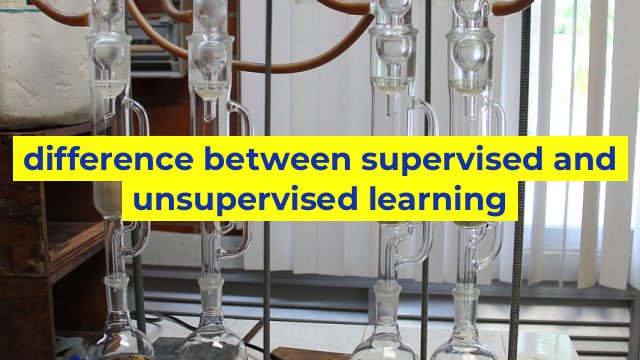Difference Between Supervised and Unsupervised Learning
The two main types of machine learning techniques are supervised and unsupervised learning. While both algorithms aim to analyze data and uncover hidden insights, they have distinct approaches and objectives. Here, we’ll discuss the key differences between supervised and unsupervised learning.
What is Supervised Learning?
Supervised learning is a type of machine learning where an algorithm uses labeled data to train a model. The algorithm is provided with a set of input variables and their corresponding output variables. The goal of the algorithm is to extract patterns from the data and generate a predictive model that can be used to predict future outcomes based on new, similar data.
The labeled data is split into a training dataset and a testing dataset. The training dataset is used to train the model, and the testing dataset is used to evaluate the accuracy of the model. Supervised learning can be further classified into classification and regression.
What is Unsupervised Learning?
Unsupervised learning, on the other hand, doesn’t use labeled data to train an algorithm. Instead, the algorithm is fed with unlabeled data and must identify hidden patterns or structures from it. The main objective of unsupervised learning is to explore the data and extract useful information from it.
There are two popular unsupervised learning algorithms: clustering and dimensionality reduction. Clustering is used to group similar data points together, while dimensionality reduction reduces the number of variables in the dataset while retaining important information.
Key Differences
One of the key differences between supervised and unsupervised learning is the availability of labeled data. Supervised learning needs labeled data to train the model, while unsupervised learning can work with unlabeled data. In supervised learning, there is a target variable that the algorithm aims to predict. In unsupervised learning, the algorithm seeks to uncover hidden patterns or structures from the data.
Another major difference is the type of output that is generated. Supervised learning generates a predictive model that can be used to make future predictions based on similar data. Unsupervised learning, on the other hand, doesn’t generate predictive models but instead generates insights or inferences about the data.
Conclusion
Both supervised and unsupervised learning are valuable machine learning techniques that can be used for data analysis and modeling. While they have different goals and approaches, both techniques can provide insights and solutions to complex problems. The choice of which algorithm to use depends on the nature of the data, the problem at hand, and the desired outcome.
Table difference between supervised and unsupervised learning
Supervised vs Unsupervised Learning
| Features | Supervised Learning | Unsupervised Learning |
|---|---|---|
| Data Type | Requires labeled data | Can work with unlabeled data |
| Goal | Make predictions or classify new data | Discover patterns in data, find similarities or differences |
| Training Process | Learn from labeled data through a process of trial and error | Learn from unlabeled data by finding commonalities, groupings, or structures in the data |
| Examples | Predicting housing prices, spam classification | Market basket analysis, clustering similar customer groups |
| Limitations | Requires labeled data which can be time-consuming and costly to obtain | Does not necessarily provide clear insights or explanations for patterns in the data |


